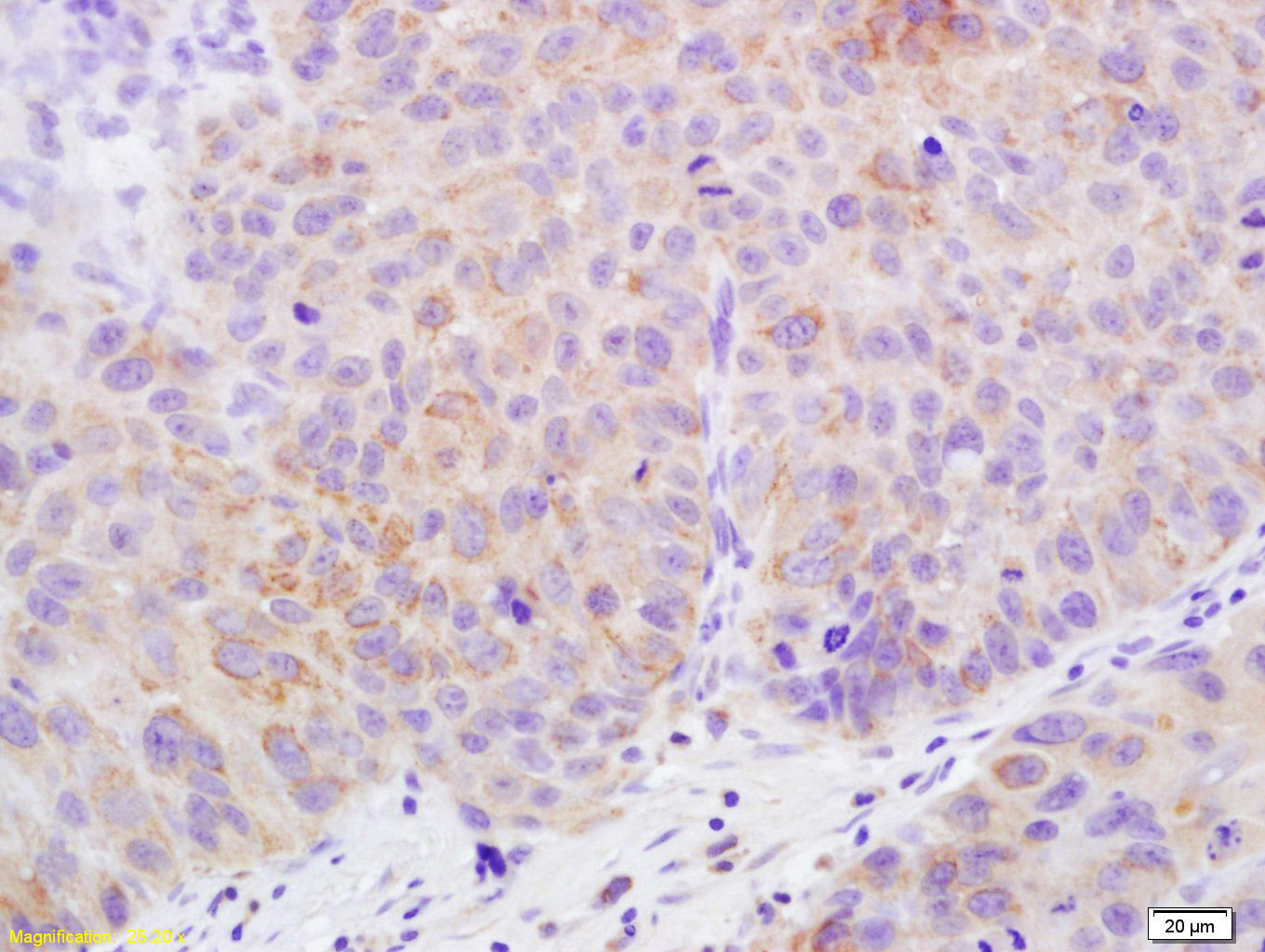
Rabbit Anti-Claudin 17 antibody
CLDN17; CLD17_HUMAN.
View History [Clear]
Details
Product Name Claudin 17 Chinese Name 紧密连接蛋白17抗体 Alias CLDN17; CLD17_HUMAN. Research Area Cell biology Signal transduction Transmembrane protein Immunogen Species Rabbit Clonality Polyclonal React Species Human, (predicted: Horse, ) Applications WB=1:500-2000 ELISA=1:5000-10000 IHC-P=1:100-500 IHC-F=1:100-500 ICC=1:100-500 IF=1:100-500 (Paraffin sections need antigen repair)
not yet tested in other applications.
optimal dilutions/concentrations should be determined by the end user.Theoretical molecular weight 25kDa Cellular localization The cell membrane Form Liquid Concentration 1mg/ml immunogen KLH conjugated synthetic peptide derived from human Claudin 17: 29-81/224 <Extracellular> Lsotype IgG Purification affinity purified by Protein A Buffer Solution 0.01M TBS(pH7.4) with 1% BSA, 0.03% Proclin300 and 50% Glycerol. Storage Shipped at 4℃. Store at -20 °C for one year. Avoid repeated freeze/thaw cycles. Attention This product as supplied is intended for research use only, not for use in human, therapeutic or diagnostic applications. PubMed PubMed Product Detail The claudin superfamily consists of many structurally related proteins in humans. These proteins are important structural and functional components of tight junctions in paracellular transport. Claudins are located in both epithelial and endothelial cells in all tight junction-bearing tissues. Three classes of proteins are known to localize to tight junctions, including the claudins, Occludin and Junction adhesion molecules (JAMs). Claudins, which consist of four transmembrane domains and two extracellular loops make up tight junction strands. Emerging evidence suggests that the Claudin family of proteins regulates transport through tight junctions via differential discrimination for solute size and charge. Mammalian claudin-17 and claudin-8 may be the result of a gene duplication. Claudin-17 is expressed in stratum granulosum of the epidermis and infundibulum and predominantly localizes to the plasma membrane.
Function:
Claudin proteins are a family of transmembrane proteins associated with tight junctions, and different tissues exhibit different Claudin composition. There are 18 homolgs present in humans, and mutations in any of these proteins cause a variety of human disease, this indicates their physiological importance. CLDN17, clustered with CLDN8 at human chromosome 21q22.11, is a four transmembrane protein with WWCC motif, defined by W-X(17-22)-W-X(2)-C-X(8-10)-C.
Subcellular Location:
Integral membrane protein. Tight junctions.
Similarity:
Belongs to the claudin family.
SWISS:
P56750
Gene ID:
26285
Database links:Entrez Gene: 26285 Human
Entrez Gene: 239931 Mouse
Omim: 609131 Human
SwissProt: P56750 Human
SwissProt: Q8BXA6 Mouse
Unigene: 258589 Human
Unigene: 126860 Mouse
Product Picture
Antigen retrieval: citrate buffer ( 0.01M, pH 6.0 ), Boiling bathing for 15min; Block endogenous peroxidase by 3% Hydrogen peroxide for 30min; Blocking buffer (normal goat serum,C-0005) at 37℃ for 20 min;
Incubation: Anti-Claudin 17 Polyclonal Antibody, Unconjugated(SL13751R) 1:200, overnight at 4°C, followed by conjugation to the secondary antibody(SP-0023) and DAB(C-0010) staining
References (0)
No References
Bought notes(bought amounts latest0)
No one bought this product
User Comment(Total0User Comment Num)
- No comment



 +86 571 56623320
+86 571 56623320
 +86 18668110335
+86 18668110335

